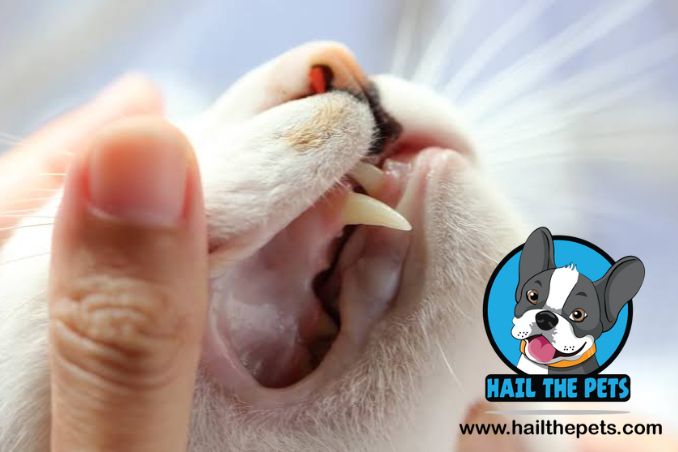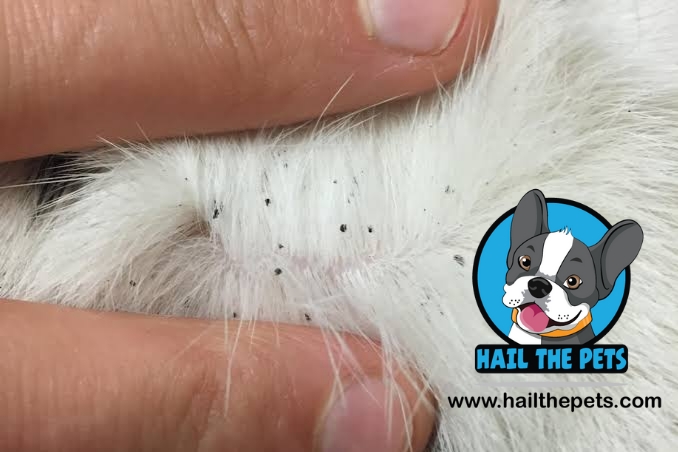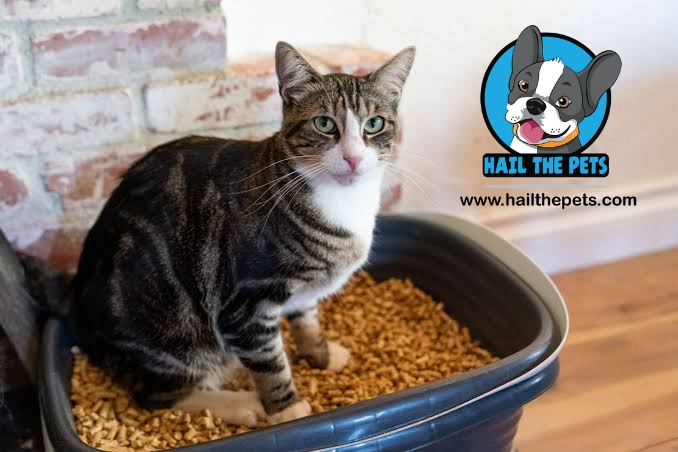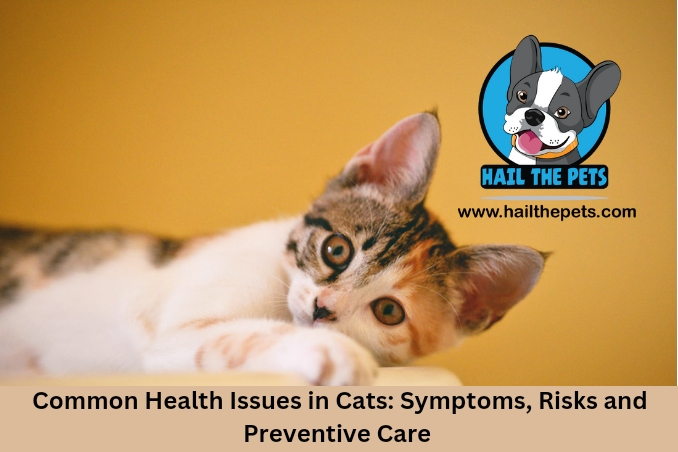As a cat parent, you must know that these species are independent animals. They rarely require any attention from their owners. But, as pet parents, you are responsible for knowing about every common health issue in cats. Since cats are good secret keepers, understanding the signs and symptoms of these diseases can be difficult too.
You have landed on the right page if you are looking for some common cat diseases and their symptoms. Here, we will give you a basic guideline on common health issues in cats and what you can do to identify and treat them.
If you are finding it difficult to understand your feline friends’ body language, read more: Understanding cat behavior: How to decode cat cues for better communication- June 2023
What Are the Most Commonly Occurring Health Issues in Cats?
According to RSPCA, the most common general problem affecting cats is dental problems (15.1%). On the contrary, only 9.8% of cats suffer from parasitic infections. The best part about this research is that 32% of the participant pets were healthy and had no health issues. The same research study suggests that purebred cats are more likely to get coat or skin disorders. Crossbred cats have a higher chance of developing abscesses and hyperthyroidism.
Read more: cat health issues

Most Common Health Issues in Cats
Feline Lower Urinary Tract Disease (FLUTD)
Feline lower urinary tract disease combines several diseases that can affect your cat. It is one of the health issues in cats that affects the urinary bladder and can create problems in your cat’s life.
Cause
There are several common causes of feline lower urinary tract diseases. Some of these include UTIs, inflammation as well as diet.
Signs and Symptoms
- Painful urination
- Frequent urination
- Inappropriate urination
- Bloody urine
- Frequently licking the genital area
The disease can affect both male and female cats. However, obese cats are more prone to getting this disease. Older cats commonly eating dry food are also at risk of developing this illness.
Diagnosis
If you take your cat to the vet, they will first examine and perform a urinalysis to check the urinary tract problem. Your vet may even suggest performing tests like urine cultures and ultrasounds.
Read more: Basics of Cat Grooming: How to Maintain your Feline’s Overall Hygiene- July 2023
Treatment
The treatment of this illness depends on the signs and symptoms of your cat. The most common treatments include fluid therapy, improvement in diet, and catheterization.

Dental Diseases
According to reports, dental diseases are one of the most common health issues in cats. Almost 50 to 90% of the cats over four years of age have suffered from some form of dental diseases. However, on the positive side, most bacterial infections in cats are preventable or treatable. These diseases may vary in severity. Let’s discuss the three most common dental conditions in cats.
- Gingivitis – In this condition, the gums get inflamed because of plaque buildup. Symptoms of gingivitis include redness, bleeding of gums, and swelling.
- Periodontitis – If left untreated, gingivitis develops into periodontitis. It occurs when the gums’ soft tissue or the bone supporting the teeth becomes injured. Symptoms are the same as gingivitis, except for bad breath and drooling.
- Tooth resorption occurs when the inside structure of the tooth breaks down. The cause of this disease is unknown. However, it is the most common cause of tooth loss in cats. Symptoms of this disease include drooling, turning of the head to the side, and inability to eat.
Read more: Creating a viable dog schedule for your canine: A guide for busy pet owners- July 2023
Treatment
As mentioned above, typical dental diseases are easily treatable and preventable. It would be best to brush your cat’s teeth every two weeks habitually, as it helps prevent the buildup of plaque.
Read more: Traveling with a cat? Do’s and Don’ts of traveling with your furry
If your cat already has a diagnosed dental disease, then management is the first step. Your vet may advise you to remove the damaged tooth. Removing it will also help prevent the disease from spreading to other teeth.

Tapeworms
Tapeworms are a common form of intestinal parasites affecting indoor and outdoor cats. It is the second most common health issues in cats. These cat worms can infest your cat’s intestinal tract when it ingests any intermediate host, such as a flea or rodent.
The three most common types of tapeworms found in cats are
- Dipylidium caninum
- Taenia taeniaeformis
- Echinococcus
Causes
When cats clean themselves, they ingest fleas and tapeworm larvae. These larvae develop into adult tapeworms inside the intestines. Mostly, cats older than six months are likely to get tapeworm infections. Kittens who have fleas also have a higher chance of getting tapeworms.
Read more: Litter Box Training: Tips and Tricks to Successfully Introduce Litter Box Your Feline – August 2023
Signs and symptoms
Tapeworm symptoms are hard to notice, but you may see weight loss in your cats. The most straightforward sign that your cat has tapeworm is to look at its poop near its anus or any place it sleeps. It is because these cat worms usually come out of the cat’s anus while sleeping. If, by any chance, you get to see white worms that look like grains of rice, then your cat has tapeworms.
Diagnosis
If you suspect your cat has tapeworms, then take your cat for an evaluation. They will take a faecal sample of your cat’s poop to help confirm the tapeworm diagnosis. If you find tapeworms, you can take them in a sealed plastic bag to the vet for diagnosis.
Treatment
To treat your cats for tapeworms, you must deworm them every one to three months. You can also discuss the deworming medicine to give your cat to your vet. Some of these are readily available in supermarkets. An example of a deworming table is Praziquantel.
Fleas
Cats groom themselves quite often, so the chance of catching fleas is common. Cat fleas are dark brown and are around 1-2mm long. The best to check if your cat has fleas is to look for tiny black specks when combing. Put these black specks on wet tissue paper. If it turns red, it is from the blood inside the fleas. These parasites usually are at their peak during the summer season.
Causes
Most cats that love to roam outdoors are more prone to bringing home fleas. Coming in contact with rodents around the house also makes them open to catching fleas.
Signs and Symptoms
One of the prominent signs that your cat has developed fleas is when you notice them overgrooming. It can cause bald patches on their coat. If your cat has a flea allergy, it may look like they have scabs or red sores. Over-grooming will not help your cat get rid of fleas, but it will help you find them. These health issues in cats commonly affect those with long hair.
Read more on other reasons for bald spots: bald spots on cats
Diagnosis
If you suspect your cat has fleas, take them to the vet. At first, your vet may physically examine your cat for red spots and bite marks. After this, they may perform a skin patch test on your cats to confirm the diagnosis.
Treatment
Discuss with your vet about getting a flea treatment. Never use any anti-flea medicine with permethrin, as it is highly toxic.

Feline upper respiratory tract infection
A feline upper respiratory tract infection is a viral, fungal or bacterial infection in cats nose, throat, and mouth. Sometimes it may cause cat wheezing, which may be a sign of a serious infection
Causes
90% of cold in cats is caused by feline herpesvirus and calicivirus. Other than these two, Chlamydophilia, Bordetella, and mycoplasma are the common causative agents. Cats living in shelters or young kittens are more prone to catching respiratory infections. However, indoor cats can detect these infections, too.
Read more: Types of Rabbit Breeds: Decoding their Sizes, Coats and Personality Traits- July 2023
Signs and Symptoms
The most common upper respiratory tract infection signs may look like a human cold. A few symptoms include cat wheezing, sneezing, discharge from eyes and nose, coughing, congestion, lethargy, and fever. Symptoms of this infection may last for about seven to ten days. It may even cause fever in cats.
Treatment
Most of the mild symptoms will need supportive care. If the symptoms worsen, your cat may require antibiotics or even hospitalization. If your cat is not eating anything and has a high fever, immediately rush them to the vet.

Diarrhea
Cat diarrhea is also similar to human diarrhea. It is when your cat passes loose stools and with increases in the amount and frequency. Diarrhea can only be an underlying sign of some other disease. These health issues in cats can also occur when they ingest something that is not in their routine diet.
Causes
Infectious agents are the most common cause of bacteria. Coccidia and intestinal worms are the most common types of infective agents. Other than this, environmental toxins or poisonous plants can also cause diarrhea. A change in diet can also be one of the reasons for this.
Signs and Symptoms
If you have a well-trained cat who suddenly had a mishap with their poop, it may be due to diarrhea. You may notice that these stools are unformed or liquid in consistency. If your cat is covering up their stool in the litter box, it may take a lot of work to notice. In such cases, look for soiling around their fur.
Treatment
For a healthy cat, vets may recommend to stop feeding for around 24 hours. You may also provide them in small quantities. Other vets may even recommend a special diet with a proper balance of fibres and probiotics to support your cat’s immune system.
If your cat’s condition does not improve in four days, your vet may give your cat antibiotics or fluid replacement therapies.

Conclusion
A happy cat is healthy, and knowing that your cat is sick can be worrisome for any cat parent. Knowing about the health issues in cats is the responsibility of every pet owner. Regular vet checkups help to prevent any or all of these health issues in cats. Ensure your cats have an essential, healthy, and clean environment. It not only helps to keep your vet bills at bay but also helps in keeping your feline friend away from health issues in cats. If you notice these symptoms in your cat, take them to the vet for prompt care and treatment.

Thank you for your sharing. I am worried that I lack creative ideas. It is your article that makes me full of hope. Thank you. But, I have a question, can you help me?